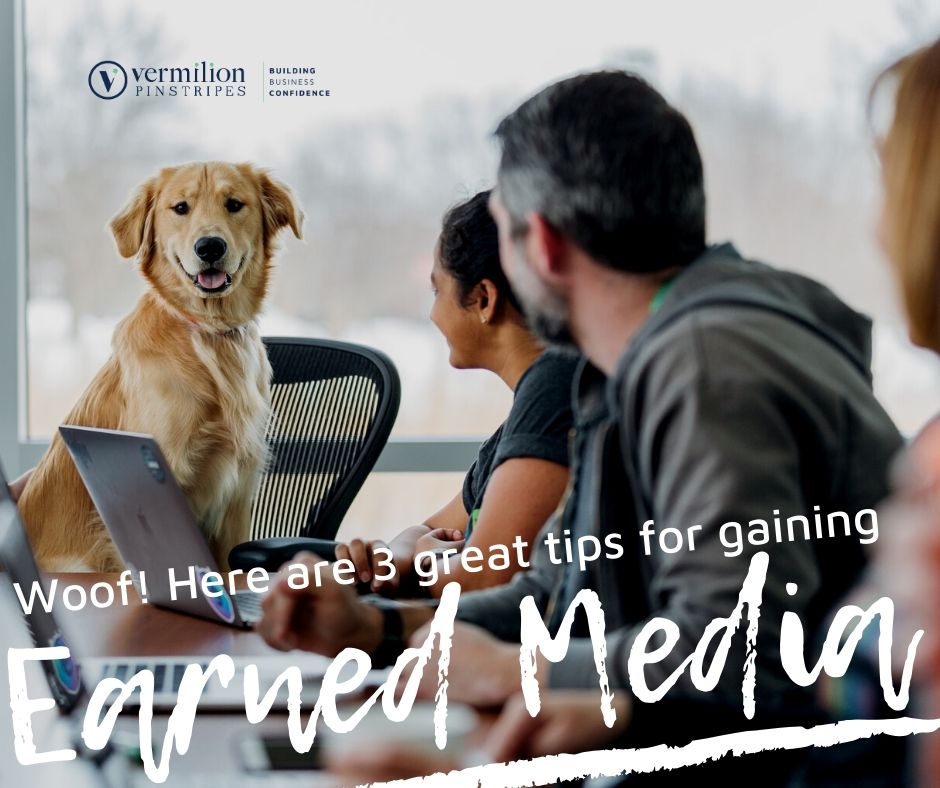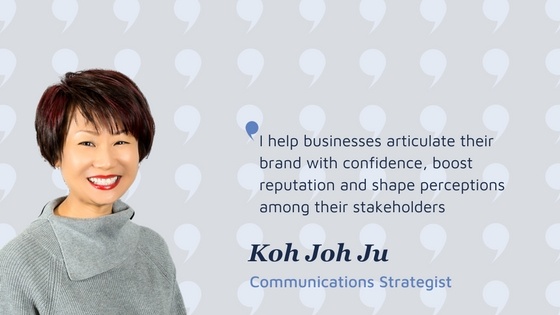Creating and Building Beneficial Media Relations
 Robin Wilson
·
6 minute read
Robin Wilson
·
6 minute read
How to Build Good Media Relations?
This blog is beneficial to business owners and upcoming communications professionals.
For many business people, dealing with the media is a daunting prospect and something they’d rather avoid.
But positive outcomes of good media relations – for example, a boost for a company’s reputation, publicity for a new product or beneficial positioning in a crisis – are all essential in today’s business environment.
Building good relations with the media can typically start with the simple process of pitching a press release to a journalist to catch their attention and “sell” the story.
Vermilion Pinstripes’ latest webinar “How to Pitch Your Story to the Media" looked at this and took participants through a step-by-step process of Pitching, complete with tips and hints for a successful outcome and beneficial on-going media relations.
Keep Your Business Head On
The webinar began with the fundamental point that Pitching a Story is just the same as a business transaction, and therefore should be researched, planned and carried out in a similar manner.
Firstly, it’s important to have an understanding of the media; who they are, what they want, and – crucially – what they don’t want.
Another point to consider is the difference between the media of print/website newspapers and magazines, as well as radio and TV broadcast media; versus the recent phenomenon of Instagram and YouTube influencers.
While all these recent social media characters have their place and relative value in overall publicity, this blog focuses instead on professional journalists working for media companies – i.e. trained and experienced journalists.
Avoiding Puffery
News organisations typically have office structures with different types of journalists covering their own “beats” or story subjects. A newspaper can have a Sports Desk, Business Desk, Features Desk, City Desk, etc., etc.
All these journalists seek to write about news and have strict parameters to follow when assessing the value of a potential story. They’re adept at telling the difference between a credible news story and a “free puff” – i.e. an advert dressed up to look like news.
Free puffs are given short shrift in any pitch to a journalist, so it’s vital to have material that’s newsworthy, relevant to their readership and easy to understand.
This is where the principle of having a press release that answers the questions of the five W's and the H - Who, Where, What, When, Why and How – comes into play. And it goes without saying that any press release should not be littered with spelling mistakes and bad grammar.
As well as their need for good, credible news material, journalists also work under time constraints with strict deadlines to meet. So, they certainly don’t appreciate their time being distracted by a pitch when they’re under pressure to meet a deadline.
Tailoring Materials
Another important element in all this understanding of the media is looking at the outcome a successful Pitch can achieve – a praiseworthy product review, a photo or video story, or even a follow-up feature with a journalist taking time to delve deeper into the material.
This raises another point; the type of journalists that may be encountered in the Pitching process and their own individual needs.
A more laid-back character will welcome a well-presented press release that answers all his or her questions and can be put forward for publication more or less untouched.
But another more diligent character may want to put his or her stamp on the story by re-writing it, or looking for an angle to make a good accompanying photograph or video.
In-Depth Research
Once an understanding of these general media principles is gained, it’s time to put them into practice and this means researching the local media you want to target.
Read, watch or listen to your local media. Identify the journalists covering the type of news you want to Pitch. Stories usually have by-lines with the journalist’s name and sometimes even an e-mail address.
Build your own media database containing the names of publications, appropriate journalists, phone numbers and e-mail addresses.
Remember that each publication or news organisation will have deadline times when no-one has the time or inclination to listen to a Pitch.
Find out these deadline times – you can call the switchboard to ask about them - and add to your media database so that you can make your Pitch at appropriate times.
Making Contact
Pitches can be made by a phone call, or by an e-mail followed by a call. However they’re done, the personal touch of a phone call is essential. Again, just like business dealings, the Pitch phone call or e-mail should be planned as a businesslike procedure.
So, just as in preparing for a business transaction, all materials should be checked for content and accuracy. That means making sure your press release answers the five W and H questions, and is newsworthy and credible.
Ensure you’re approaching the most appropriate journalist for your Pitch. It’s no use trying to pitch a Business story to a Sports journalist; doing so will likely consign your story to the bin, get your media relations off on the wrong foot and possibly even sour the relationship for good.
It’s always good to have materials that are concise, creative and catchy to pique the journalist’s interest.
One way to get more comfortable before you pick up the phone is to practice with a colleague or friend. This may also help you understand the gravitas of the story you’re trying to pitch.
Your phone manner should be friendly, but businesslike. Remember, this is a business transaction. You may get a warm reception, or you may get a brusque response.
Keep it Courteous
Whatever the reaction, keep an even manner and don’t be a nuisance. Newsrooms get a lot of Pitch phone calls and journalists avoid people they perceive to be wasting their time with non-stories or repetitive calls. Don’t be that person!
Rather, make your pitches of interest and of value to journalists, so that they welcome your calls because they know they won’t be a waste of time.
If you manage to develop this relationship it could well be that journalists will start to call you for a story!
However, if your Pitch falls flat, don’t take it as a failure, but learn from the experience. Analyse your materials and your pitch – you can even ask the journalist why it’s of no interest.
Take rejection on the chin and use it as a learning experience for your next attempt. Don’t become rude, disparaging or defensive with the journalist. Maintain a friendly manner and use it as a valuable lesson for the future.
In Summary
-
Pitching to the media is similar to a business transaction and should be planned as such
-
Materials should be newsworthy, credible and easy to understand. A creative approach is valuable.
-
Learn from the experience and use these learnings to develop your Pitching
Building Your Relationships with the Media
As mentioned, relationships with journalists can be developed with beneficial effects on both sides – you can become a valued source of news material and your company can achieve good, reputation-building coverage.
But it’s also useful to be cautionary in these relationships. A good, diligent journalist will always discard any semblance of friendship in favour of getting a good story. If there’s a negative to be uncovered in your material that’s newsworthy, then the journalist will use it, not matter how friendly you’ve become.
That’s a possible downside to consider, but also be aware that relationships with the media can also be developed and expanded in a variety of ways.
Inviting media to an event to launch a product or story is one way to get beyond the format of simple press release distribution.
This development of media relationships also brings its challenges. For example, management interviews have to be carefully planned and handled to ensure there’s no potential for negativity.
A Winning Example
As an example of pitching and development of media relations, the webinar looked at a recent media event staged for a Vermilion Pinstripes client in Singapore.
Nursing home operator, All Saints Home wanted publicity for the opening of its fourth new home, equipped with special facilities for elderly dementia patients including table tennis therapy.
The table tennis was used as a “hook” in the media invitation, with the catchy title “Anyone for Tennis” and an offer to play table tennis with the company CEO and residents while touring the facility – an attractive photo opportunity.
This Pitch was successful and resultant coverage featured both the table tennis photograph and key messages of the new home and its range of therapies.
Game, set and match for the Pitching process!
Are you ready?
Step #1 – Writing A Press Release
You see, unlike blogs or opinion articles, a press release needs to be written in a format useful for journalists and editors so they don’t have to waste precious time rewriting it. If not in that format, your press release is likely to be discarded. The precursor to the How to Pitch to the Media webinar delves into what to do...and not to do when writing your press release.
Download free workbook - Writing a Press Release
Step #2: Pitch Your Story!
Now you have your story, what can you do to pitch your story or event to cynical journalists - and hook their interest to generate valuable media coverage? Communications Strategist Koh Joh Ju and I covered the above and more in our webinar, and provide a free workbook for you to immediately put your new knowledge to use!
Download free workbook - How to Pitch Your Story
The Vermilion Pinstripes team has created a series of educational resources aimed at helping local businesses do their own PR and marketing for better business. These resources include webinars, workbooks and ready-to-use templates such as the free workplace communications presentation template businesses to communicate with their staff, partners and customers during the COVID pandemic.
Book a 30-minute Free Consultation
Keep on making waves in the digital world! Our experts are ready to support you—schedule your free 30-minute consultation today.



.png?width=1920&name=How%20to%20Pitch%20to%20the%20media%20(no%20date).png)



